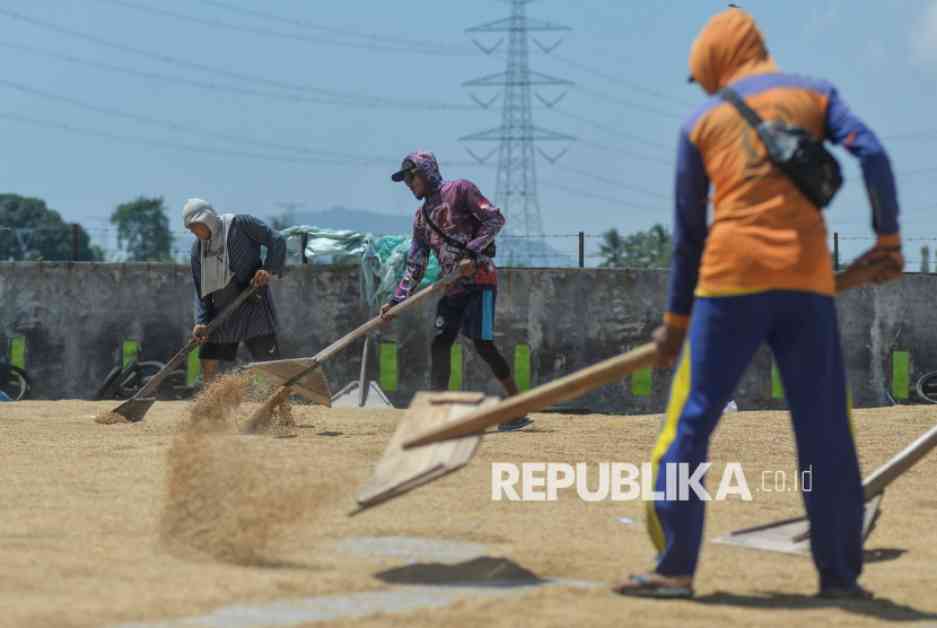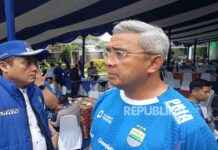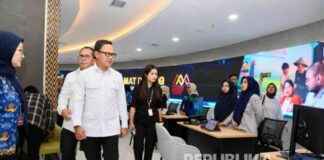Amalia Adininggar Widyasanti, the Acting Head of BPS, recently shared an optimistic outlook on the rice harvest potential in early 2025. According to the latest observations, the potential rice cultivation area from January to March 2025 is estimated to reach 2.83 million hectares, marking a significant increase of 52.08 percent compared to the same period last year. This surge in harvest potential signifies a strong recovery in the rice sector following the impacts of last year’s El Nino phenomenon.
In a virtual press release on Monday (3/2/2025), Amalia highlighted that this increase in harvest potential also translates to a projected rice production of 15.06 million tons of milled dry paddy (GKG) throughout January to March 2025, reflecting a 52.40 percent rise from the previous year. Despite a decrease in cultivation area in some regions at the beginning of 2024 due to extreme weather phenomena, the Indonesian agricultural sector has once again demonstrated remarkable resilience and strength.
“Based on our gathered data, the agricultural sector, particularly in rice cultivation, has shown significant recovery in the second half of 2024, and we hope that this positive trend will continue into 2025,” Amalia added. This resurgence in the agricultural sector bodes well for the overall economy and food security of the nation.
### The Role of Java Island in Rice Production
Furthermore, Amalia explained that Java Island remains a primary region for rice production, with approximately 54.18 percent of the total national rice cultivation area in 2024 originating from provinces in Java, such as East Java, Central Java, and West Java. With the expanding cultivation area, BPS is confident that these key production regions will play a pivotal role in maintaining the stability of rice supply in the domestic market.
The agricultural landscape of Indonesia is not only a crucial economic aspect but also deeply intertwined with the cultural and social fabric of the nation. As rice holds a symbolic significance in Indonesian traditions and cuisine, the increase in harvest potential brings hope for both economic prosperity and cultural sustenance. The dedication of farmers, the resilience of the agricultural sector, and the support from government initiatives all contribute to this promising forecast for the rice harvest in 2025.
As we look forward to the coming months, the progress and success of the rice harvest will not only impact the economy but also resonate with every meal shared around family tables across the archipelago. The fields of green, swaying in the gentle breeze, tell a story of hard work, hope, and the cycle of life that sustains us all. With each grain of rice harvested, there is a tale of perseverance and abundance, ready to be savored by millions. Let us celebrate the dedication of those who toil the land, the resilience of nature, and the promise of a bountiful harvest that nourishes our bodies and souls.
The potential increase in rice harvest not only signifies a boost in agricultural productivity but also embodies the spirit of resilience and growth that characterizes the Indonesian people. As the nation moves forward into 2025, the golden fields of rice stand as a testament to the unwavering spirit of farmers and the promise of a flourishing future for all who call Indonesia home. Let us embrace this season of abundance with gratitude and optimism, knowing that each grain of rice harvested is a symbol of hope for a brighter tomorrow.
In conclusion, the anticipated rise in rice harvest for the early months of 2025 paints a promising picture for Indonesia’s agricultural sector. With increased cultivation areas and projected production levels, the nation is poised for a successful harvest season that not only sustains its people but also fuels economic growth and stability. As the fields prepare for the bounty that lies ahead, the nation eagerly awaits the fruits of labor and nature’s generosity. The story of the rice harvest in 2025 is one of hope, resilience, and the enduring bond between the land and its people, woven into the fabric of Indonesia’s rich tapestry of life.














